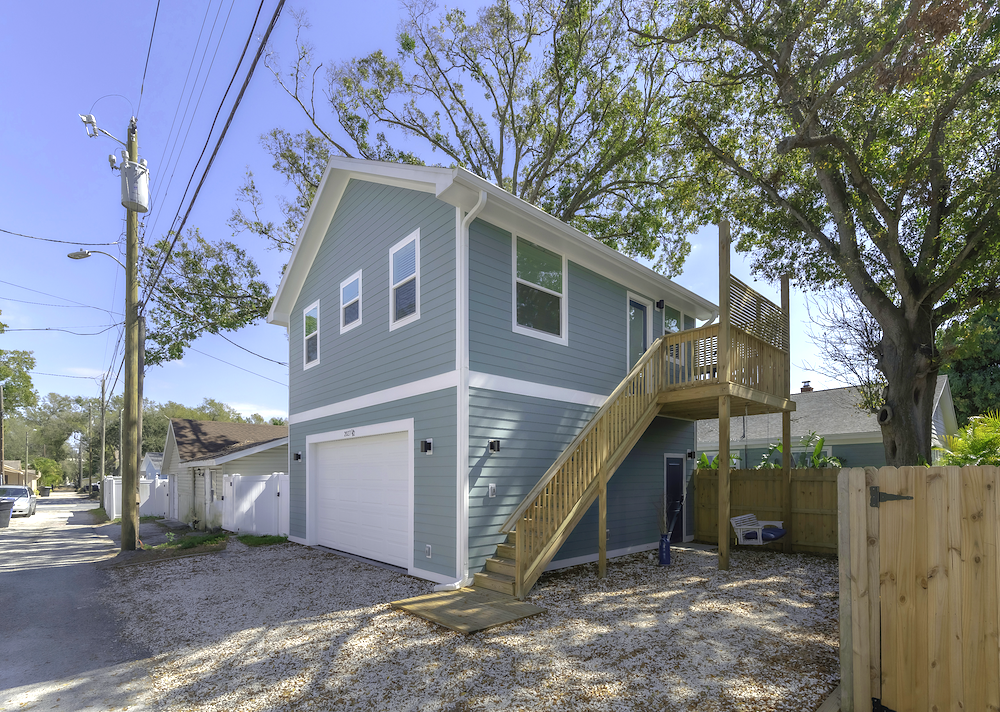The Tampa Bay area is working to make Accessory Dwelling Unit construction more accessible for every homeowner. Many neighborhoods throughout St. Petersburg already allow for these tiny homes, and there are plans to expand zoning to more areas throughout Tampa. The need for tiny homes is growing as homeowners look to increase space, rental income, or accommodate family members.

The Tampa Bay area is working to make Accessory Dwelling Unit construction more accessible for every homeowner. Many neighborhoods throughout St. Petersburg already allow for these tiny homes, and there are plans to expand zoning to more areas throughout Tampa. The need for tiny homes is growing as homeowners look to increase space, rental income, or accommodate family members.


Before you dive into ADU construction, it’s crucial to consider the rules and regulations that determine your eligibility. Here’s what you need to know:
It’s important to consult with a professional to ensure that your property and ADU meets all local zoning laws and regulations. Contact CASK Construction, the #1 ADU Build in St. Pete, to see if you can build an ADU on your property.
Before you dive into ADU construction, it’s crucial to consider the rules and regulations that determine your eligibility. Here’s what you need to know:
It’s important to consult with a professional to ensure that your property and ADU meets all local zoning laws and regulations. Contact CASK Construction, the #1 ADU Build in St. Pete, to see if you can build an ADU on your property.
Finding out your specific zoning district is the first step to ensure ADU compliance. In St. Petersburg, Florida, the zones where you can build an Accessory Dwelling Unit (ADU) are critical factors in determining your eligibility and the specific regulations you must adhere to. St. Pete employs a zoning code that classifies different areas within the city into various zones, each with its own set of rules and regulations.
Let’s take a closer look at some of the key zones where ADUs can typically be built:
You can look up your zoning district by clicking
the link below and entering your address.
Once you know your zoning district and the applicable rules, you can confidently move forward with your ADU project, whether it’s attached or detached, and create a valuable addition to your property.
From increased living space to enhanced property value, hear from homeowners about the multitude of benefits ADUs have brought to their homes and lives.
ADUs are incredibly versatile, capable of fulfilling various roles, from creating additional living space for family members to offering a source of rental income or even providing a tranquil home office retreat. When considering the construction of an ADU in St. Petersburg, Florida, understanding the various types of ADUs and determining which purpose you want yours to fulfill will help determine eligibility.
View the different types of ADUs we can create to suit your lifestyle.
ADUs are incredibly versatile, capable of fulfilling various roles, from creating additional living space for family members to offering a source of rental income or even providing a tranquil home office retreat. When considering the construction of an ADU in St. Petersburg, Florida, understanding the various types of ADUs and determining which purpose you want yours to fulfill will help determine eligibility.
View the different types of ADUs we can create to suit your lifestyle.
Property specifications are pivotal when determining the eligibility for constructing an Accessory Dwelling Unit (ADU) in St. Petersburg, Florida. These specifications play a crucial role in ensuring compliance with local regulations.
Let’s explore these specifications to provide you with a comprehensive understanding of their significance:
In many cases, local zoning codes stipulate a minimum lot size for ADU construction.
The minimum distance that your ADU must be from property lines, adjacent buildings, and other structures can vary based on your zoning district.
Zoning regulations often dictate how many parking spaces must be provided for both the main dwelling and the ADU.
There may be limits on the number and size of accessory structures, which include ADUs, on your property.
The portion of your property that can be occupied by structures, including the main dwelling, ADU, and any other outbuildings, typically have limits to prevent overdevelopment and maintain green space.
Zoning codes may impose height restrictions on ADUs to maintain the character of the neighborhood and prevent overshadowing or blocking views from neighboring properties.
Some areas may require that either the main dwelling or the ADU be owner-occupied to qualify for ADU construction.
